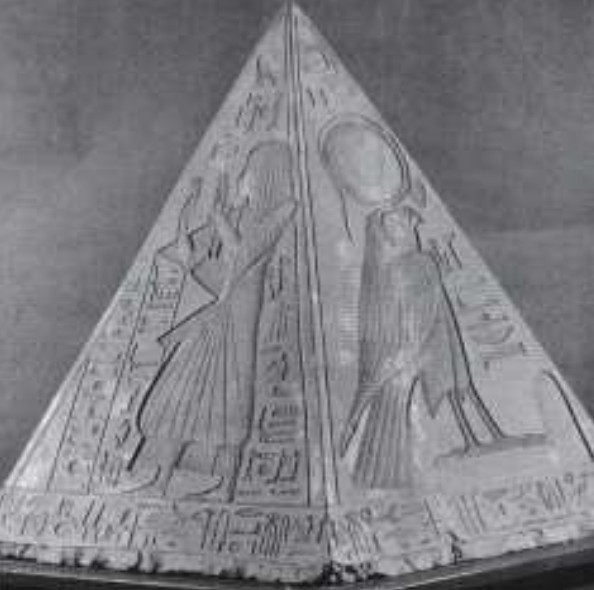The Egyptian phoenix
Other hypotheses take us down the Egyptian trail, suggesting that the name of the Benu bird, derived from the root Bn could have been fitted around the Greek word « phoinix »
. With the Egyptians, the legend of the phoenix is linked to the solar cult. In this conception dating back more than 25 centuries BC, the Phoenix was a migrating bird called Benu identified with the image of the sun born in the small hours and whose cyclical appearances translated into regenerative virtues. This version of the myth found particular favour in Heliopolis[1], metropolis where the god Ra[2] was considered the creating force of the universe. The first available intimation of the benu bird harks back to the Old Kingdom[3], it is inscribed on the walls of the burial chamber in the pyramid of Unas[4]. Known as the Pyramid Texts, these engraved inscriptions amount to a collection of magic formulae and directions which give the deceased kings all the information they need after death, thereby securing his eternity and triumph over death. They underpin what is known of the principles of religious thought in Egypt.
Still in Heliopolis, the benu bird has pride of place on the Benben stone[5] set at the centre of the great temple of the sun. This stone no doubt informs the shape of the obelisks adorning in pairs the access to the temples, and the pyramidion of which is often lined with gold silver or electrum – a naturally occurring alloy of gold and silver – in order to reflect the first rays of the sun. The capstones topping the pyramids were described as pyramidions and were venerated as the physical dwelling of the sun god. Dead and buried inside the pyramid, the king seemed to be under the direct protection of the sun in person according to his subjects' beliefs. This pyramidion serving as a capstone atop the obelisks became the Egyptians' most sacred talisman. Paired up with the representation of the sun god, the phoenix had become a symbol of re-birth or resurrection.







